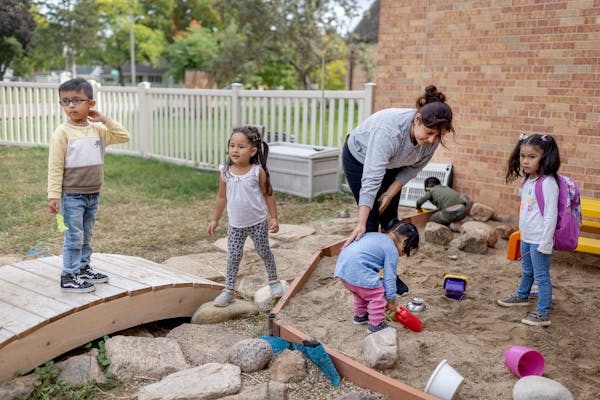The final blast of COVID pandemic relief money provided $1.3 billion to Minnesota schools with a goal of boosting air quality for students and teachers — a key strategy to keep them healthy as viruses of all sorts circulate in classrooms and hallways.
But tracking how schools statewide are using the American Rescue Plan (ARP) money for better ventilation, plus staffing and other needs, before the September 2024 deadline is not easy.
So far, the Minnesota Department of Education says districts have asked for reimbursement for just $13 million in air-quality expenses from that pool of money through the fiscal year that ended June 30. The state's accounting of the money does not reflect all projects in progress or still in the planning stages.
The picture is similarly cloudy nationwide. While ARP offered $122 billion to improve air quality, among other pandemic recovery efforts, industry professionals say the projects don't always come together quickly.
Some districts have been waiting on equipment and the freeing up of contractors, pushing much of the work to next summer. And some states like Minnesota don't track expenditures until upgrades are complete and districts seek reimbursement.
"It's really not fair for us to say they're just sitting on the money," said Anisa Heming, director of the Center for Green Schools at the U.S. Green Building Council, which promotes such investments and sees the logistical challenges facing districts.
A national study by the group says schools are planning at least $5.5 billion in HVAC and air filtration projects with their ARP windfall — second only to investments in teachers, academic interventionists and guidance counselors.
St. Paul Public Schools is one of the Minnesota school districts with work underway that is not yet reflected in the state's tally of ARP-funded air-quality projects. Altogether, the district is investing $28 million in infrastructure improvements across several schools.
The work is in addition to an already robust capital improvement plan, and would not have come together as quickly without the influx of federal funding, officials say.
Approaches vary by district
A Minnesota Department of Education spreadsheet with ARP-funded capital expenditures by 33 school districts showed the dollars spent, but referred questions about the project details to the individual districts.
Topping the list was Moorhead Area Public Schools at $5.4 million, but the district said its HVAC projects director was unavailable last week and could not explain how it spent the money — nor any potential health benefits that may have resulted.
The Staples-Motley school district is using $423,119 in federal pandemic money as one of as many as nine funding sources for a large-scale HVAC and air-quality improvement projects at its middle/high school, Superintendent Shane Tappe said.
Half of the school was finished this summer, and the other half — with gym spaces that can get "pretty sticky" — will be completed next year, he said. In the renovated half, temperatures are more easily controlled and humidity less noticeable.
"I believe it will create better outcomes for our students and staff," Tappe said.
Some districts made investments earlier in the pandemic to attempt to improve air quality but don't plan to make more changes with the ARP funding.
In 2020, Anoka-Hennepin, the state's largest school district, invested $1.44 million from an earlier round of federal funds on an air-treatment system that releases electrically charged ions into the air to deactivate viruses.
The system came with lofty claims that since have made it the subject of a class-action lawsuit. Anoka-Hennepin staff members say it has reduced odor and improved air quality.
But St. Paul Public Schools, which was pitched on the product, steered clear after a standards-setting organization said the ionization system lacked "convincing scientifically-rigorous, peer-reviewed studies" that would make it a recommended best practice.
Instead, the state's second-largest district has stuck with the tried-and-true basics of building management and engineering.
'Very in-depth process'
At AGAPE High School in St. Paul's Hamline-Midway neighborhood recently, Matt Fischer and Eric Frison — members of a crew that tests and balances airflow — gauged the volume of air being pumped through each of the ceiling vents in the cafeteria. If one were to bring in outdoor air at a rate greater than designed, another is likely shorted, and air quality could suffer.
Angela Vreeland, the district's air-quality coordinator, said the testing, recalibration and maintenance, and then retesting can take three to six months per building. That means the crew — established in 2016 and patterned after a similar program in Minneapolis Public Schools — has yet to reach every school, Vreeland said.
"It is a very in-depth process, but we are seeing huge benefits in their work," she added.
St. Paul's accounting of its COVID relief funding has drawn national attention, making it easy to track its ARP-funded HVAC upgrades.
Construction is complete at Maxfield Elementary and began this summer at Highland Park Middle School and Mississippi Creative Arts. Those two schools will see a second and final phase of construction next summer.
The district is taking bids for the Rondo Complex and has executed a contract for Creative Arts High School — with work at both to be performed next summer.
Officials say that with each of the projects already having been designed, plus the long lead times, the district does not expect to confront any labor shortages.
The frustration of equipment delays has hit home for Heming, of the Center for Green Schools. Her daughter attends a school in Washington, D.C., and while it recently underwent an HVAC upgrade, it still lacks the parts needed to get it up and running.
And that has led to the continued use of window air conditioners, and an old-school reality: classrooms that are cool but not particularly well-ventilated.
Carolyn Parnell, 'trailblazer' who served as Minnesota's first IT commissioner, dies


